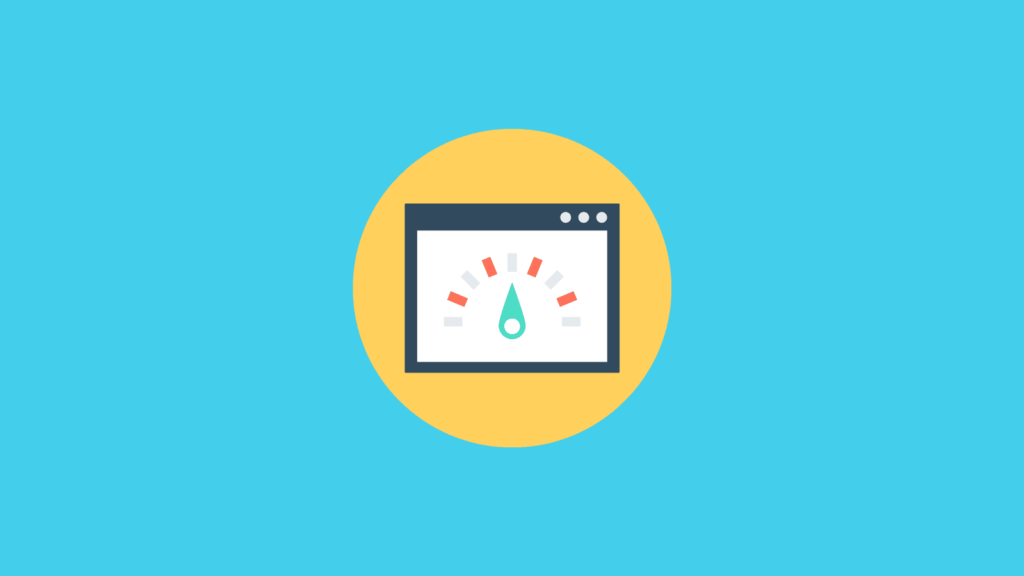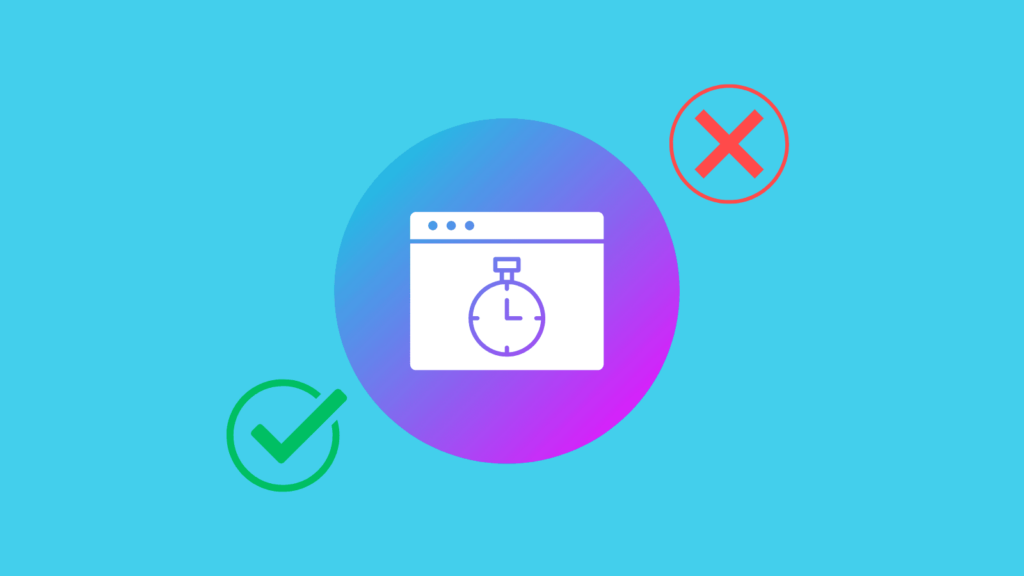How Can Website Design Help You Stand Out in 2024
Optimizing your website and stand out from the crowd by delivering the best possible experience to your visitors.

What do you call a slow website? A snail-paced site? A turtle’s crawl? I don’t know how you will address such sites, but I call it a disaster waiting to happen. If you want to improve your SEO Toronto game, you must instill yourself in bettering website’s speed and performance. It’s not just about impressing your visitors, but also about making sure Google’s bots don’t give up on crawling your site before they’ve even started. So, let’s get your website moving faster than a cheetah on Red Bull!
Joke
Why did the web developer refuse to go on a date?
He didn’t want to give away his CSS!
In this article
- Tip 1: Optimize your images for the web
- Tip 2: Minimize HTTP requests
- Tip 3: Enable browser caching
- Tip 4: Use a content delivery network (CDN)
- Tip 5: Choose a reliable hosting provider
- Tip 6: Minimize JavaScript and CSS files
- Tip 7: Use a lightweight website theme
- Tip 8: Monitor your website’s speed and performance
- Do’s and don’t for optimizing website speed and performance
- Do’s:
- Don’ts:
- Conclusion
- FAQ
Tip 1: Optimize your images for the web

As per Kinex Media’s SEO Executives, “Images can be a double-edged sword.” They can make your website look stunning, but they can also slow it down significantly. That’s why you need to optimize them. Make sure they are in the right format (JPEG, PNG, GIF, or SVG) and reduce their size without compromising their quality. You can use tools like Adobe Photoshop, GIMP, or online platforms like TinyPNG to compress your images.
Real-life example:
The team at Kinsta, a managed WordPress hosting company, reduced the size of their images by 1.3 MB, resulting in a 66% improvement in page load time. As a result, their bounce rate decreased by 33% and their organic traffic increased by 140%.
Tip 2: Minimize HTTP requests
Every time a user tries to access your website, the browser sends an HTTP request to your server for every single element on your page (images, scripts, stylesheets, etc.). Your website will become slow if There are certain ways to minify HTTP requests like:
- Using CSS sprites to merge ‘n’ number of images into one
- Removing futile widgets & plugins
- Combining multiple files into one (e.g., CSS and JavaScript files)
Real-life example:
The team at WPBeginner reduced their HTTP requests by 57% by combining their CSS and JavaScript files and removing unnecessary plugins. As a result, their page load time improved by 1.39 seconds, and their organic traffic increased by 20%.
Joke:
Why did the web developer break up with his girlfriend?
She didn’t appreciate his responsiveness!
Tip 3: Enable browser caching
Browser caching is an indispensable process to store static files (CSS, JavaScript, images, etc.) on a user’s computer, so they don’t have to be downloaded every time the user visits your site and accesses the templates. Enabling browser caching can significantly reduce page load time and improve user experience.
Real-life example:
When Crazy Egg, an analytics tool, enabled browser caching on their website, their page load time improved by 70%, resulting in a 24% increase in conversions.
Tip 4: Use a content delivery network (CDN)
A CDN is a big network of servers found across the globe. When a user requests a page from your website, the server closest to their location will serve the page. This can significantly reduce page load time, especially for users who are geographically far away from your server.
Real-life example:
When WPBeginner started using a CDN, their page load time improved by 61%, resulting in a 7% increase in conversions.
Joke
What do you call a website that can’t do math?
A calculator with a broken mouse!
Tip 5: Choose a reliable hosting provider

Your website’s hosting provider can have a significant impact on its speed and performance. Make sure you choose a reliable hosting provider that offers:
- High uptime (99.9% or higher)
- Fast servers
- SSD storage
Real-life example:
When WP Rocket, a caching plugin, migrated their website to Kinsta, a managed WordPress hosting company, their page load time improved by 52%. As a result, their organic traffic increased by 18%.
Tip 6: Minimize JavaScript and CSS files
JavaScript and CSS files can slow down your website’s performance if they are not optimized. Make sure you:
- Minimize your CSS and JavaScript files
- Use asynchronous loading for JavaScript files
- Move your JavaScript files to the bottom of your page
- Use inline CSS for small CSS code
Real-life example:
When WPForms, a WordPress form plugin, minimized their CSS and JavaScript files, their page load time improved by 56%. As a result, their conversion rate increased by 23%.
Joke
Why did the web developer go broke?
He used up all his cache!
Tip 7: Use a lightweight website theme
The theme you choose for your website can significantly affect its speed and performance. Make sure you choose a lightweight theme that doesn’t come with unnecessary features and functions.
Real-life example:
When Astra, a lightweight WordPress theme, was used instead of a heavyweight theme, the page load time improved by 45%. As a result, the bounce rate decreased by 20% and the conversion rate increased by 20%.
Tip 8: Monitor your website’s speed and performance

Monitoring your website’s speed and performance is essential to identify issues and improve it further. You can use tools like Google PageSpeed Insights, GTmetrix, or Pingdom to analyze your website’s speed and performance and identify areas for improvement.
Real-life example:
When Elegant Themes, a WordPress theme and plugin company, started monitoring their website’s speed and performance, they identified several issues and improved their page load time by 58%. As a result, their organic traffic increased by 59%.
Riddle:
Why did the web developer quit his job?
He didn’t get arrays!

Do’s and don’t for optimizing website speed and performance
Do’s: |
Don’ts: |
|
|
FAQs
How important is website speed for user experience?
Website speed is crucial for user experience, as users tend to abandon websites that take more than a few seconds to load. According to a study by Google, 53% of mobile users will leave a site that takes longer than three seconds to load. Additionally, a one-second delay in page load time can result in a 7% reduction in conversions.
How can I measure my website’s speed and performance?
There are several free tools available online to measure website speed and performance, including Google PageSpeed Insights, Pingdom, and GTmetrix. These tools analyze website speed, provide a detailed report of issues, and suggest optimizations to improve performance.
What are some common factors that affect website speed?
Several factors can affect website speed, including large image or video files, unoptimized code or scripts, excessive HTTP requests, unoptimized server or hosting environment, and unoptimized database queries.
How can I optimize images and videos to improve website speed?
To optimize images and videos, you can reduce their file size without compromising the quality by compressing them using online tools like TinyPNG or Squoosh. Additionally, using the correct image format (such as JPEG for photographs and PNG for graphics) and reducing their dimensions can also help reduce file size.
How can caching improve website speed?
Caching can significantly improve website speed by storing frequently accessed data in a temporary storage location (such as a browser cache or a content delivery network). This reduces the amount of data that needs to be transferred between the server and the client, resulting in faster page load times.
What is minification, and how can it improve website speed?
Minification is the process of removing unnecessary characters (such as white space, comments, and line breaks) from code or script files. This reduces their file size and improves website speed by reducing the time it takes for the browser to download and parse the code.
How can I optimize the server and hosting environment to improve website speed?
To optimize server and hosting environment, you can choose a reliable and fast hosting provider, enable compression, use a content delivery network, and configure server caching. Additionally, optimizing database queries and reducing the number of HTTP requests can also improve server response times.
What is responsive design, and how can it improve website speed?
Responsive design is a web design approach that allows websites to adapt to different screen sizes and devices. By using responsive design, websites can improve website speed by reducing the amount of data that needs to be transferred and optimizing the website for specific devices and screen sizes.
How can I optimize website code to improve website speed?
To optimize website code, you can use minification, reduce the number of HTTP requests, optimize images and videos, and leverage browser caching. Additionally, using asynchronous loading for scripts and deferring non-critical scripts can also improve website speed.
How often should I monitor website speed and performance?
You should monitor website speed and performance regularly to ensure optimal performance. It is recommended to monitor website speed at least once a week and after making significant changes to the website. This allows you to identify and address issues promptly and ensure that your website is providing the best user experience possible.
Slow Website? Expect Slow Sales! Why SEO Toronto Experts Emphasize Website Optimization
According to a report by Google, the probability of a mobile user bouncing from a website increases by 32% when the page load time increases from one to three seconds. This means that if your website takes more than three seconds to load, you might be losing potential customers.
Additionally, a slow website can impact user experience, resulting in a decrease in customer satisfaction. If your website is not user-friendly, customers might not return, affecting your sales and revenue.
Let’s take the example of Amazon. In 2012, Amazon experienced a one-second delay in page load time, resulting in a loss of $1.6 billion in sales per year. This highlights the importance of website optimization and how it can impact your bottom line.
Conclusion
Optimizing your website’s speed and performance is crucial for improving your SEO game and providing an excellent user experience. By optimizing images, minimizing HTTP requests, enabling browser caching, using a content delivery network, choosing a reliable hosting provider, minimizing JavaScript and CSS files, using a lightweight theme, and monitoring your website’s speed and performance, you can significantly improve your website’s performance. Remember to follow the do’s and don’ts to ensure that you achieve the desired results without compromising on quality. By doing so, you can ensure that your website stands out from the crowd and delivers the best possible experience to your visitors.
FAQ
What is stand-out website design?
Stand-out website design refers to a visually appealing and unique web design that captures users’ attention and sets a website apart from others.
Why is website design important for online success?
Website design is crucial because it influences user perception, engagement, and trust. A well-designed site can lead to higher conversion rates and better user experiences.
What are the key elements of a stand-out website design?
Key elements include a visually appealing layout, easy navigation, consistent branding, high-quality visuals, responsive design, and clear calls to action.
How can I make my website design more unique?
To make your website design stand out, consider custom graphics, typography, color schemes, and interactive elements that align with your brand identity.
What role does mobile responsiveness play in stand-out website design?
Mobile responsiveness ensures that your website looks and functions well on various devices, which is essential for a modern and user-friendly design.
Is minimalistic design a good approach for a stand-out website?
Yes, minimalistic design can be highly effective, as it emphasizes simplicity, clarity, and a focus on essential content and features.
How does website speed affect the impact of a stand-out design?
Fast-loading websites are essential for retaining user interest. Slow loading times can detract from even the most visually appealing designs.
What is the importance of user experience (UX) in stand-out website design?
Excellent UX, including intuitive navigation and user-friendly features, is crucial for keeping visitors engaged and making your design memorable.
Can I use pre-made templates for a stand-out website design?
While templates can be a starting point, customizing them to align with your brand and unique style is essential to create a stand-out design.
How can I evaluate the effectiveness of my stand-out website design?
You can evaluate your design’s effectiveness through user feedback, analytics, conversion rates, and by comparing it to competitors in your industry.
What is the role of color psychology in stand-out website design?
Color psychology helps designers choose colors that evoke specific emotions or reactions, making the design more impactful and memorable.
How can storytelling be integrated into a stand-out website design?
Storytelling elements, such as compelling narratives, can be incorporated into the design to engage users on a deeper level and leave a lasting impression.
Are there specific design trends that can help a website stand out in 2023?
In 2023, design trends like immersive 3D visuals, microinteractions, and creative typography can help websites stand out.
What role does accessibility play in stand-out website design?
Accessibility ensures that all users, including those with disabilities, can access and navigate your website, enhancing its inclusivity and impact.
How can I balance aesthetics with functionality in my website design?
Striking the right balance involves prioritizing user experience while maintaining a visually appealing design that aligns with your brand.
What are the best practices for creating a memorable website logo as part of the design?
A memorable logo should be simple, unique, relevant to your brand, and easily recognizable, contributing to the overall standout design.
Should I consider incorporating video content into my website for a stand-out design?
Yes, videos can engage visitors and convey information effectively. Integrating video content can make your website more engaging and memorable.
How can I optimize my website for search engines without compromising the design’s aesthetics?
Properly structured content, descriptive image alt text, and fast-loading pages can improve SEO while preserving the design’s appeal.
What role does user feedback and A/B testing play in refining a stand-out website design?
User feedback and A/B testing allow you to gather data and make informed design decisions to continuously improve your website’s impact.
Can professional website designers help create a stand-out design for my business?
Yes, hiring professional designers with expertise in web design can greatly enhance your chances of creating a stand-out and effective website design.
How can I ensure my website design aligns with my brand’s personality and message?
Customizing colors, fonts, and visuals to match your brand’s identity ensures design alignment.
What are the principles of responsive web design, and why are they crucial for a standout website?
Responsive design adapts your website’s layout for various screen sizes, improving accessibility and user experience.
What are the latest typography trends in standout website design?
Recent trends include bold and creative typography choices that enhance visual impact.
How can I use whitespace effectively in my website design to create a standout look?
Whitespace, or negative space, helps focus attention on key elements, creating a clean and visually pleasing design.
What is the importance of cross-browser compatibility in stand-out website design?
Cross-browser compatibility ensures your website looks and functions consistently across different web browsers.
How can I incorporate user-generated content (UGC) into my website design to make it more engaging?
Integrating UGC such as customer reviews or user-generated visuals can add authenticity and engagement to your design.
What are the key considerations when designing the website’s navigation menu for a standout design?
A clear and intuitive navigation menu helps users find information easily and enhances the overall user experience.
How can I use storytelling techniques in visual elements like images and graphics to make my website design more compelling?
Visual storytelling involves using images and graphics that convey a narrative, enhancing user engagement.
What are some effective ways to maintain a standout website design over time as design trends evolve?
Regularly updating your design elements and staying informed about design trends can help you keep your website fresh and impactful.
What role does user testing play in ensuring a stand-out website design is effective?
User testing helps identify usability issues and gather feedback to refine and improve the design for your target audience.
GlobalOwls Empowers you to become the best version of yourself
Check out the following resources and Grow!